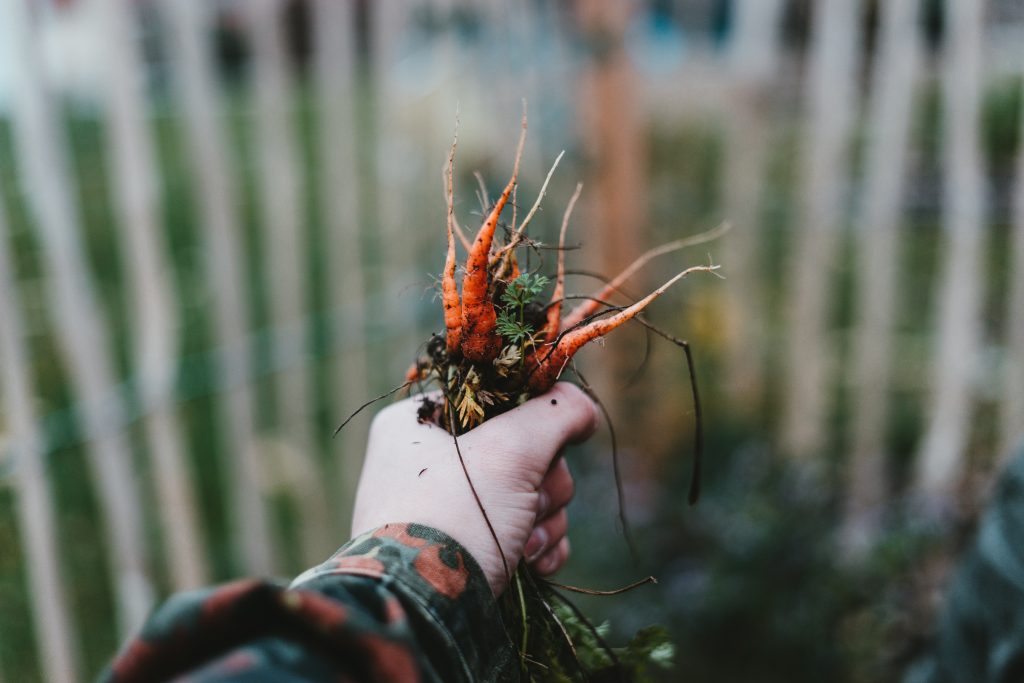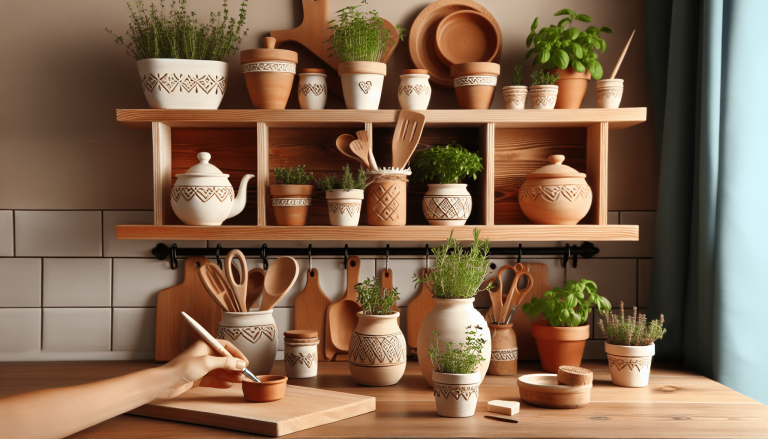Get ready to embark on your gardening journey with these helpful tips for beginners! Whether you’ve recently developed a green thumb or are simply looking to expand your gardening skills, this article has got you covered. From selecting the right plants for your space to mastering basic watering techniques, we’ll walk you through everything you need to know to create a thriving garden. So, grab your gloves and shovel, and let’s get started!
Table of Contents
Toggle1. Planning Your Garden
1.1 Determining the Purpose of Your Garden
Before you start planning your garden, it’s important to determine the purpose or goal you have in mind for it. Are you looking to grow your own vegetables and herbs? Or perhaps you want to create a beautiful flower garden to enhance your outdoor space. Understanding the purpose will help you make decisions when it comes to selecting plants, choosing the right location, and determining the size of your garden.
1.2 Choosing the Right Location
The location of your garden plays a crucial role in its success. Most plants require at least 6 hours of direct sunlight each day, so choose a spot that receives ample sunlight. Additionally, consider the accessibility of the area for watering and maintenance purposes. Avoid areas that are prone to strong winds, as they can damage delicate plants or cause soil erosion.
1.3 Assessing the Soil
Before you start planting, it’s essential to assess the quality and composition of your soil. Different plants thrive in different soil types, so it’s important to know what you’re working with. You can purchase a soil testing kit or send a sample to a local extension office to determine the pH, nutrients, and organic matter content of the soil. Based on the results, you can amend the soil accordingly to create optimal conditions for your plants.
1.4 Considering Sunlight Exposure
Sunlight is a vital factor in plant growth, so it’s important to consider the sunlight exposure in your chosen location. Take note of how the sun moves across your garden throughout the day and identify areas that receive the most sunlight. Some plants require full sun, while others prefer partial shade or full shade. Understanding the sunlight exposure in your garden will help you select the right plants for each specific area.
1.5 Deciding on Garden Size
The size of your garden will depend on the available space you have, your time commitment, and your gardening goals. Start small if you’re a beginner, as maintaining a larger garden can be overwhelming. Consider your available time for maintenance and the number of plants you want to grow. It’s better to have a small, well-maintained garden rather than a large garden that becomes difficult to manage. You can always expand and add more plants as you gain experience and confidence.
2. Selecting Plants
2.1 Starting with Easy-to-Grow Plants
If you’re a beginner, it’s best to start with easy-to-grow plants that are more forgiving and require less maintenance. Herbs like basil, mint, and parsley, as well as vegetables like tomatoes, lettuce, and radishes, are great options for beginners. These plants tend to be resilient and offer a high chance of success, boosting your confidence as a gardener.
2.2 Considering Local Climate
Take into account the local climate conditions when selecting plants for your garden. Certain plants thrive in specific climates, so choose varieties that are adapted to your region’s temperature, humidity, and rainfall patterns. Consult local gardening guides or speak to experts at garden centers to ensure you choose plants that will thrive in your specific climate.
2.3 Choosing the Right Plant Varieties
When selecting plants, consider the variety or cultivar that suits your gardening goals. Different plant varieties have unique characteristics and growth habits. Some may be more disease-resistant, while others may produce larger fruits or colorful blooms. Research different varieties and choose ones that align with your preferences and garden requirements.
2.4 Understanding Planting Zones
Planting zones are geographical areas that determine the suitability and optimal timing for planting specific plants. Knowing your planting zone will help you determine which plants are most likely to thrive in your area. You can find information about your planting zone on gardening websites, or consult with local nurseries or extension offices for guidance on plant selection based on your zone.
2.5 Determining Plant Spacing
Spacing is crucial to ensure that plants have enough room to grow and receive adequate sunlight and air circulation. Overcrowded plants can be more susceptible to diseases and pests. Follow the recommended spacing guidelines provided on seed packets or plant labels. This will help you avoid overcrowding and maximize the potential of each plant in your garden.
3. Preparing the Soil
3.1 Clearing the Area
Before you start preparing the soil, clear the area of any existing vegetation, weeds, or debris. Remove large rocks, roots, or other obstacles that may impede plant growth. An area free of obstructions will allow your plants to establish strong and healthy root systems.
3.2 Testing and Amending the Soil
Once the area is cleared, it’s important to test the soil to determine its pH level and nutrient composition. This can be done using a soil testing kit or by sending a sample to a local extension office. Based on the test results, you may need to amend the soil by adding organic matter, such as compost or aged manure, to improve its structure and fertility.
3.3 Creating Raised Beds
If your soil quality is poor or you have limited space, consider creating raised beds for planting. Raised beds provide better drainage, control soil erosion, and offer improved soil conditions for plant growth. They also make it easier to manage and maintain your garden, especially for individuals with physical limitations.
3.4 Adding Organic Matter
Incorporating organic matter into your soil is crucial to improve its fertility and structure. Organic matter, such as compost, adds essential nutrients, improves moisture retention, and promotes beneficial microbial activity. Spread a layer of compost over the soil surface and work it into the top few inches using a garden fork or tiller.
3.5 Removing Weeds and Debris
Before you start planting, make sure to remove any weeds or unwanted plant debris in the area. Weeds compete with your desired plants for nutrients, water, and sunlight, so it’s important to keep them under control. Regular weeding helps prevent weed growth and ensures that your plants have the best chance to thrive.
4. Watering Techniques
4.1 Understanding Watering Needs
Proper watering is essential for plant growth and survival. Different plants have different watering needs, so it’s important to understand the specific requirements of the plants in your garden. Some plants prefer moist soil, while others prefer drier conditions. Overwatering can lead to root rot and other diseases, while underwatering can cause wilting and stunted growth. Observe your plants regularly and adjust your watering schedule accordingly.
4.2 Using Proper Irrigation Methods
Choosing the right irrigation method is crucial for efficient water usage in your garden. Options include handheld watering cans, garden hoses with adjustable nozzles, drip irrigation systems, or sprinklers. Consider factors such as plant size, water requirements, and garden layout when selecting the most appropriate irrigation method for your garden.
4.3 Watering at the Right Time
Watering plants at the right time of day can make a significant difference in their health and growth. Watering early in the morning allows moisture to penetrate the soil before evaporation occurs, reducing the risk of fungal diseases. Avoid watering during the heat of the day, as the water can evaporate quickly, and watering in the evening can create a humid environment that promotes fungal growth.
4.4 Avoiding Overwatering
Overwatering is a common mistake among beginners and can lead to plant stress and root rot. It’s important to strike a balance and provide adequate water without drowning the roots. To prevent overwatering, ensure that the soil is well-draining and allow the top few inches to dry out before watering again. Pay attention to the signs of overwatering, such as yellowing leaves, wilting, or a foul odor, and adjust your watering practices accordingly.
4.5 Conserving Water
Water conservation is important for both environmental sustainability and cost savings. Consider implementing water-saving techniques in your garden, such as using mulch to retain soil moisture, collecting rainwater in barrels for irrigation, and grouping plants with similar water needs together. Opt for drought-tolerant plant varieties that require less water, and avoid watering unnecessary areas, such as driveways or sidewalks.
5. Provide Adequate Sunlight
5.1 Determining Sunlight Requirements
Different plants have varying sunlight requirements, so it’s important to understand the specific needs of the plants in your garden. Some plants thrive in full sun, while others prefer partial shade or full shade. Observe the sunlight patterns in your garden throughout the day and choose the appropriate plant varieties for each specific area based on their sunlight needs.
5.2 Maximizing Sun Exposure
To maximize the sunlight exposure in your garden, strategically position your plants to take advantage of the available sunlight. Place taller plants on the north side of your garden to prevent shading smaller plants. Minimize obstructions, such as trees or buildings, that may cast shadows on your garden area. Regularly prune nearby vegetation to allow more sunlight to reach your plants.
5.3 Protecting Plants from Excessive Sun
While sunlight is essential for plant growth, excessive sunlight can sometimes be harmful. Some plants may suffer from sunburn or heat stress if exposed to intense heat and sunlight for prolonged periods. Protect your plants from excessive sun by providing shades or using shade structures, such as pergolas, trellises, or shade cloth. This will help maintain optimal growing conditions and prevent sun-related damage.
5.4 Using Shade Structures
Shade structures are a great way to provide protection from intense sunlight and create comfortable, shaded areas in your garden. Pergolas, arbors, and trellises covered with climbing plants offer both shade and aesthetic appeal. Shade cloth or umbrellas can provide temporary shade for potted plants or delicate seedlings. Consider the needs of your plants and the aesthetic you want to achieve when choosing shade structures for your garden.
5.5 Rotating Sun-Loving Plants
To ensure equal sunlight exposure for different plants in your garden, consider rotating sun-loving plants. This involves moving plants to different areas of your garden each year or season to prevent concentrated sunlight exposure on one side. By rotating your plants, you can avoid potential imbalances in growth and improve overall plant health.
6. Fertilizing and Nutrient Management
6.1 Understanding Plant Nutrient Requirements
Plants require a balanced supply of essential nutrients for healthy growth and productivity. Understanding the nutrient requirements of your plants will help you provide them with the necessary fertilizers and amendments. Nitrogen (N), phosphorus (P), and potassium (K) are the primary macronutrients needed in varying quantities, along with secondary and micronutrients.
6.2 Using Organic and Synthetic Fertilizers
There are two main types of fertilizers: organic and synthetic. Organic fertilizers are derived from natural sources such as compost, manure, or fish emulsion. They improve soil fertility and structure while promoting long-term sustainability. Synthetic fertilizers are manufactured and provide nutrients in concentrated forms. They offer quick-release nutrients but may lead to soil imbalances if not used properly. Choose fertilizers based on your gardening philosophy and the specific needs of your plants.
6.3 Composting for Nutrient-Rich Soil
Composting is a sustainable practice that benefits both the environment and your garden. It involves decomposing organic matter, such as vegetable scraps, grass clippings, leaves, or coffee grounds, to create nutrient-rich compost. Adding compost to your garden improves soil fertility, moisture retention, and microbial activity. Start composting by creating a compost bin or pile in a suitable location in your garden.
6.4 Avoiding Over-Fertilization
While fertilization is beneficial for plant growth, over-fertilization can be harmful. Excessive fertilizer application can lead to nutrient imbalances, salt buildup in the soil, and environmental pollution. Follow the recommended application rates provided on fertilizer packaging and avoid applying more than necessary. Regularly observe your plants for signs of nutrient deficiencies or excesses and adjust your fertilizer regime accordingly.
6.5 Replenishing Essential Nutrients
Plants deplete nutrients from the soil as they grow, so it’s important to replenish the essential nutrients regularly. You can do this by applying organic compost, slow-release fertilizers, or liquid fertilizers throughout the growing season. Consider conducting soil tests periodically to monitor nutrient levels and make informed adjustments to your fertilization routine.
7. Managing Pests and Diseases
7.1 Identifying Common Garden Pests
Many pests can pose a threat to the health and vitality of your garden plants. Common garden pests include aphids, slugs, snails, caterpillars, and beetles. Learn to identify common pests in your area by observing any visible damage, holes, or bite marks on your plants. Early detection and identification are crucial for effective pest management.
7.2 Using Natural Pest Control Methods
When dealing with pests, it’s best to start with natural control methods that are safe for both the environment and beneficial organisms. These methods include handpicking pests, using water sprays or insecticidal soaps, introducing beneficial insects like ladybugs or praying mantises, and planting companion plants that repel pests. Establishing a diverse and balanced ecosystem in your garden can help naturally control pest populations.
7.3 Integrated Pest Management (IPM)
Integrated Pest Management (IPM) is an eco-friendly approach to pest control that combines different strategies to manage pests effectively. This approach involves monitoring pest populations, using cultural practices to prevent infestations, and incorporating chemical treatments only as a last resort. IPM focuses on long-term solutions that minimize environmental impact and promote plant health.
7.4 Preventing Disease Outbreaks
Plant diseases can cause significant damage to your garden, so it’s important to implement preventive measures. Start by selecting disease-resistant plant varieties that are adapted to your local conditions. Practice proper sanitation by removing and destroying infected plant debris and disinfecting gardening tools. Avoid overwatering, as excess moisture can promote fungal diseases. Proper air circulation and avoiding overcrowding can also help prevent disease outbreaks.
7.5 Treating Plant Diseases
If your plants do get infected with diseases, it’s important to take immediate action to prevent further spread. Identify the specific disease affecting your plants and choose the appropriate treatment method. This may involve applying organic fungicides, pruning infected plant parts, or removing and destroying severely affected plants. Prompt treatment can help minimize the impact of diseases and protect the overall health of your garden.
8. Proper Pruning and Trimming
8.1 Understanding Pruning Techniques
Pruning is a technique used to remove dead, damaged, or overgrown plant parts to improve overall plant health and appearance. It’s important to understand the basics of pruning to avoid unnecessary damage or stress to your plants. Learn about different pruning techniques, such as thinning, heading back, or rejuvenation pruning, and apply them appropriately based on the particular needs of each plant.
8.2 Pruning for Plant Health and Shape
Regular pruning promotes plant health by improving air circulation and sun exposure, reducing the risk of diseases. It also helps shape plants for aesthetic purposes and encourages better flower or fruit production. Prune your plants during the appropriate time of year, considering the specific plant species and its growth habits. Avoid excessive pruning, as it can weaken the plant and delay its growth and flowering.
8.3 Removing Dead or Diseased Branches
Dead or diseased branches can negatively impact the overall health of a plant and become a breeding ground for pests or diseases. Regularly inspect your plants and remove any dead or diseased branches promptly. Use clean, sharp pruning tools to make clean cuts just above the branch collar or the main stem. Proper pruning techniques and sanitation practices will help prevent the spread of diseases in your garden.
8.4 Trimming and Training Vines
Vines require special pruning and training techniques to encourage controlled growth and prevent them from overtaking other plants or structures. Regularly trim back excessive growth and remove any dead or damaged portions. Train vines along trellises, arbors, or fences to offer support and enhance the aesthetic appearance of your garden. Learn about specific pruning methods for different vine species to ensure proper growth and flowering.
8.5 Pruning Fruit Trees
Fruit trees require specific pruning techniques to promote healthy growth and bountiful harvests. Prune fruit trees during their dormant season, typically in late winter or early spring, before new growth begins. Remove any dead or diseased branches, as well as branches that cross or compete with each other. Thin the canopy to improve air circulation and sunlight penetration, which will enhance fruit quality and reduce the risk of diseases.
9. Mulching and Weed Control
9.1 Benefits of Mulching
Mulching offers numerous benefits for your garden, including weed suppression, moisture retention, temperature moderation, and soil improvement. Mulch serves as a protective cover that helps regulate soil moisture levels, reduce weed growth, and provide a barrier against extreme temperature fluctuations. It also adds organic matter to the soil as it breaks down, improving soil structure and fertility over time.
9.2 Choosing the Right Mulch
There are various types of mulch available, including organic and inorganic options. Organic mulches, such as wood chips, straw, or compost, break down over time and contribute to the soil’s organic matter content. Inorganic mulches, like gravel or landscape fabric, provide long-lasting coverage but do not add nutrients to the soil. Choose a mulch type that suits your garden’s needs and aesthetic preferences.
9.3 Applying Mulch Properly
To apply mulch effectively, spread a layer of mulch around your plants, leaving a small gap around the stems to prevent moisture buildup and root rot. Apply mulch to a depth of 2-4 inches, ensuring even coverage across the soil surface. Avoid piling mulch directly against plant stems, as this can create a damp environment that promotes disease or pest infestations.
9.4 Preventing Weed Growth
Mulch plays a vital role in suppressing weed growth by smothering weed seeds and preventing them from germinating. However, it’s important to take additional weed prevention measures. Pull any existing weeds before applying mulch, and consider using landscape fabric or cardboard as a weed barrier underneath the mulch. Regularly inspect your garden for new weed growth and promptly remove any emerging weeds.
9.5 Using Natural Weed Control Methods
If some weeds do manage to appear, there are several natural weed control methods you can employ. Hand-pulling weeds is the most straightforward method, but ensure you remove their roots to prevent regrowth. Using tools like hoes or cultivators can help remove weeds from the soil surface. Another method is smothering weeds with layers of newspaper or cardboard before applying mulch. Consider these natural methods before resorting to chemical herbicides.
10. Keeping an Eye on Garden Maintenance
10.1 Regularly Inspecting Plants
Regularly inspecting your plants is essential to identify any issues early on and take appropriate action. Observe for signs of pests, diseases, nutrient deficiencies, or any abnormalities in growth. Check for proper watering, pruning needs, and overall plant health. Early detection and intervention can prevent problems from escalating and ensure the overall success of your garden.
10.2 Dealing with Plant Diseases and Pests Promptly
If you detect any pest infestations or signs of diseases in your garden, it’s important to act promptly. Identify the specific problem and choose the appropriate treatment method, such as natural pest control methods or organic fungicides. Isolate or remove severely affected plants to prevent the spread of diseases. Regular maintenance and vigilance are key to keeping your garden healthy and thriving.
10.3 Maintaining Proper Watering Schedule
Maintaining a consistent and proper watering schedule is crucial for the health and growth of your plants. Monitor soil moisture levels regularly and adjust your watering frequency and amount accordingly. Factors such as weather conditions, plant types, and soil drainage can affect watering requirements. It’s better to water deeply and less frequently, allowing the soil to dry out slightly between watering sessions.
10.4 Removing Spent Flowers and Fruits
Removing spent flowers and fruits, a practice known as deadheading, encourages plants to continue blooming and promotes overall vigor. Remove faded flowers by cutting them just above a set of healthy leaves or a node. Similarly, harvest mature fruits when they are ripe to prevent energy waste on unproductive plant parts. Regular deadheading and fruit harvesting will keep your garden looking tidy and encourage further growth and flowering.
10.5 Cleaning and Organizing Garden Tools
Taking care of your gardening tools is essential for their longevity and performance. Clean tools after each use to remove dirt, debris, and plant residues. Keep them well-oiled and sharpened to maintain their effectiveness. Store tools in a dry and organized manner to prevent rust or damage. Regularly inspect and replace any damaged tools. Proper tool maintenance ensures that you have the necessary equipment to tackle gardening tasks and makes your gardening experience more enjoyable.
By following these comprehensive gardening tips, you can set yourself up for success as a beginner gardener. Happy gardening!









